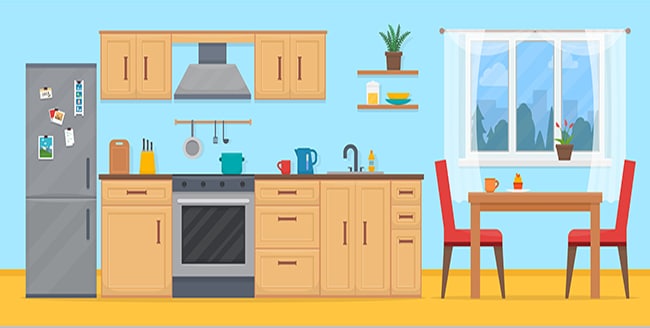Before you begin packing remember that hygiene is an important part of packing up your kitchen wares. Proper food hygiene and handwashing go hand in hand, so remember to wash up thoroughly before you begin packing up your utensils, plates, cups, and all your other kitchen supplies. Once you are done, you can then easily transfer all of the items into the cupboards of your new home. In addition, you can check non-perishable items for their expiry dates as you go through your cupboards. Any items that are past their best-before date can be composted or thrown into a green bin instead of discarding them to a landfill.
Plates
When it comes to plates, most people just stack them up on top of one another. Instead, place them on their sides, allowing the plates to be stacked on their strongest side. As a result, the probability of your plates cracking or breaking during the move will drastically be reduced. Please remember to wrap each plate individually with some sturdy wrapping paper and to ensure that the plates are not able to move about before sealing the box.
Glasses And Cups
As for glasses and cups, it is best to store them in a cardboard box with double walling for extra protection. You should also wrap each individual cup and glass with wrapping paper, so make sure that you have a steady supply at hand before you begin packing. Once complete, you should first set the glasses with the widest part down. Continue to store in this fashion, occasionally lifting the box to ensure that it is not too heavy to lift. Once the box is adequately filled, you can place a few towels, blankets, pillows to fill up any empty spaces in the box. By doing so, the glassware will be set firmly in place. Once you have completed filling the box, remember to write the words “FRAGILE” on the box so that the movers will handle your delicate glassware with care.
Cutlery
Roll up the cutlery items using some packing paper, rolling by type, and set them in the box. Rinse and repeat until the box is filled, but not over packed. Just remember to handle any sharp objects with care. To be on the safe side, we would recommend using knife protectors prior to rolling the items to avoid any injuries from open blades.
Pots And Pans
Moving on to the pots and pans, begin by meticulously cleaning and drying the items and then carefully stack them in a box with medium-sized proportions. As an added tip, you can add a sheet of paper between your non-stick coating pans in order to prevent any scratches. Moreover, cookware with glass lids should not be stored with your conventional pots and pans. Instead, store them with your glassware and other fragile items. Finally, remember to tape the boxes properly, according to weight, and label the boxes if they contain fragile items.

